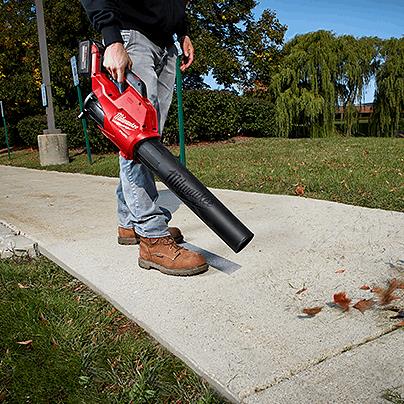Maintaining a pristine outdoor space requires the right tools, and a leaf blower is an asset for keeping yards free of debris. However, to ensure optimal performance and safety, it’s crucial to use and maintain your blower correctly. In this comprehensive guide, we’ll delve into the essential practices for both safe operation and efficient upkeep of your blower.

10 Essential Leaf Blower Care Tips
1. Read the Manual: Begin your blower journey by thoroughly reading the manufacturer’s manual. Understanding the intricacies of your specific blower model is paramount. The manual provides insights into the blower’s features, controls, and recommended maintenance procedures, serving as your go-to reference for proper usage.
2. Wear Protective Gear: Safety should always be a priority when operating outdoor power tools. Equip yourself with the necessary protective gear: eye protection shields against debris, earplugs or earmuffs guard against the blower’s loud noise, and sturdy footwear protects your feet from potential hazards. A hat and long sleeves can also offer additional protection.
3. Choose the Right Type: Blowers come in various types – handheld, backpack, and walk-behind. Select the type that aligns with the size of your yard and the kind of debris you’ll be handling. A handheld blower might suffice for a small lawn, while larger areas may benefit from the efficiency of a backpack or walk-behind model.
4. Check for Damage: Regular pre-use inspections are crucial to maintaining a safe and efficient blower. Before each operation, inspect the blower for signs of damage or wear. Look for loose parts, cracked housing, or frayed cords. Address any issues promptly to prevent potential accidents during operation.
5. Start Safely: Gas-powered blowers require careful attention during startup. Always initiate the blower outdoors in a well-ventilated area to avoid inhaling exhaust fumes. Hold the blower with both hands, ensuring the nozzle points away from yourself and others. Follow the manufacturer’s specific starting instructions to prevent any mishaps.
6. Maintain Distance: Maintain a safe distance from bystanders, pets, and delicate objects while operating the blower. Be mindful of the wind direction to avoid blowing debris toward people or property. It’s an easy step to ensure the safety of yourself and those around you.
7. Use Proper Technique: Efficient operation is not just about power but also technique. Hold the blower at waist level with a firm grip. Use smooth, sweeping motions to direct the airflow where it’s needed. Avoid swinging the blower wildly or pointing it directly at the ground, as this can kick up dust and debris, impacting both efficiency and safety.
8. Take Breaks: Yard work can be strenuous, and prolonged blowing sessions may lead to fatigue. Take regular breaks to rest and hydrate, especially in hot weather. This practice not only prevents exhaustion but also maintains your focus, reducing the risk of accidents caused by lack of attention.
9. Clean and Maintain Regularly: Post-operation, devote time to cleaning your blower thoroughly. Remove debris from the air intake vents, fan blades, and, if applicable, the debris bag. Regular cleaning prevents clogs and ensures optimal airflow. Additionally, adhere to the manufacturer’s guidelines for routine maintenance tasks such as oil changes and filter replacements.
10. Store Properly: Proper storage is key to prolonging your blower’s lifespan. Store it in a clean, dry area, away from moisture and extreme temperatures. Proper storage not only protects your investment but also ensures your blower is ready for use whenever you need it.

Conclusion
The efficient and safe use of a blower involves a combination of understanding its features, adopting proper operating techniques, and regular maintenance. By following these guidelines, you not only maximize the performance of your blower but also ensure a safe and enjoyable outdoor maintenance experience. Remember, safety is the cornerstone of a well-kept yard.
